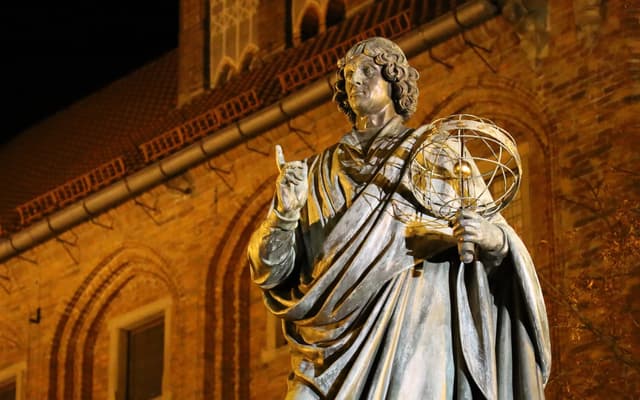Bydgoszcz vs. Toruń
Bydgoszcz
Bydgoszcz is a city in northern Poland, the largest in the Kuyavian-Pomeranian Voivodeship, and one of the country’s key historical, cultural, and economic centers. With a population of around 325,000 and a metropolitan area of approximately 600,000, it is Poland’s ninth-largest city. Located at the meeting point of the Brda and Vistula rivers, it has long been an important trade and transport hub, shaped by centuries of history and natural beauty. Though it is often overlooked by international travelers in favor of Poland’s larger cities, Bydgoszcz is an undiscovered gem with a vibrant cultural scene, beautiful waterfronts, and a dynamic urban atmosphere. A City of Water and Green Spaces One of the defining features of Bydgoszcz is its relationship with water. The city is sometimes referred to as the "Venice of Poland" due to its picturesque riverbanks, islands, and canals. The Brda River runs through the heart of the city, creating scenic waterfront areas and making Bydgoszcz a m...
Toruń
Toruń is one of Poland’s most fascinating and well-preserved cities. Sitting on the banks of the Vistula River, it’s a place where medieval charm blends seamlessly with a lively modern atmosphere. Unlike many Polish cities, Toruń was spared destruction during World War II, which means its historic Old Town remains intact, offering visitors an authentic glimpse into Poland’s past. In 1997, it was recognized as a UNESCO World Heritage Site, a testament to its architectural and cultural significance. A Medieval Treasure Stepping into Toruń’s Old Town is like walking through a storybook. Gothic churches, red-brick merchant houses, and cobblestone streets create a timeless atmosphere. The city was a powerful trading center in the Hanseatic League, and its wealth is reflected in landmarks like the Town Hall, an imposing structure at the heart of the city, and the beautifully preserved medieval walls. Many buildings date back to the 14th and 15th centuries, making Toruń one of Poland’s be...
Reviews
Reviewed on 2/27/2025
Reviews
Reviewed on 2/27/2025
| Item | Votes | Upvote |
|---|---|---|
| Small and manageable | 1 | |
| Lots of water and clean rivers | 1 |
| Item | Votes | Upvote |
|---|---|---|
| No cons yet, would you like to add one? | ||
| Item | Votes | Upvote |
|---|---|---|
| World capital of gingerbread | 1 | |
| Birthplace of Copernicus | 1 | |
| Beautiful medieval architecture | 1 |
| Item | Votes | Upvote |
|---|---|---|
| No cons yet, would you like to add one? | ||
Frequently Asked Questions
Bydgoszcz offers a rich historical narrative with its blend of Gothic, Renaissance, and Baroque architecture, along with significant historical events that shaped the city. However, Toruń is renowned for its well-preserved medieval Old Town, recognized as a UNESCO World Heritage Site, and its connection to Nicolaus Copernicus. For history enthusiasts, Toruń may provide a more concentrated experience of Poland's medieval past.
Bydgoszcz is known for its vibrant arts and music scene, hosting numerous festivals and events, particularly in classical music and jazz. In contrast, Toruń, while also culturally rich, is particularly famous for its gingerbread and has a lively student atmosphere due to Nicolaus Copernicus University. Both cities have unique cultural offerings, but Bydgoszcz may appeal more to those interested in a broader range of artistic expressions.
Bydgoszcz is often referred to as the 'rowing capital of Poland' and offers extensive opportunities for water sports, cycling, and outdoor recreation in its numerous parks and along its rivers. Toruń, while it has beautiful riverside areas like the Philadelphia Boulevard, does not have the same level of outdoor sports infrastructure as Bydgoszcz. Therefore, for outdoor enthusiasts, Bydgoszcz may be the better choice.
Bydgoszcz features a growing culinary scene with a variety of dining options along its scenic riverbanks, making it an attractive place for a relaxed meal. Toruń, known for its gingerbread and traditional Polish cuisine, also offers a charming dining atmosphere, particularly in its historic Old Town. Both cities provide unique dining experiences, but Bydgoszcz may offer more variety in terms of settings and cuisines.
Both Bydgoszcz and Toruń are family-friendly, but they cater to families in different ways. Bydgoszcz has extensive parks, water sports, and recreational activities that can engage children and adults alike. Toruń, with its historical attractions and the Museum of Toruń Gingerbread, offers educational experiences that can be enjoyable for families. The choice may depend on whether families prefer outdoor activities or historical exploration.
Bydgoszcz has several pros, including being small and manageable, which makes it easy to explore. Additionally, the city boasts lots of water and clean rivers, providing beautiful waterfronts and opportunities for water sports. Currently, there are no cons listed by users.
Bydgoszcz is known for its picturesque waterways, earning it the nickname 'Venice of Poland.' The city features a vibrant cultural scene, rich architectural heritage, and is recognized as the 'rowing capital of Poland' due to its strong tradition in water sports. It also has a growing culinary scene and lively nightlife.
In Bydgoszcz, visitors can enjoy a variety of outdoor activities, including rowing on the Brda River, cycling along well-maintained bike paths, and exploring the extensive green spaces like Myślęcinek Park. The city also hosts international competitions in various sports, making it a hub for athletic events.
Bydgoszcz has a thriving cultural scene, particularly known for its connection to music. The city is home to the Feliks Nowowiejski Academy of Music and the Pomeranian Philharmonic, which hosts numerous music festivals. Additionally, Bydgoszcz has a strong jazz scene and a rich history of film culture.
Bydgoszcz has a complex history, originally granted city rights in 1346. It has served as an important military and trade center under various rules, including Prussian and Polish. The city experienced significant industrial growth in the 19th and 20th centuries and has a rich architectural heritage reflecting its historical significance.
Visitors to Bydgoszcz can try local specialties such as pierogi (Polish dumplings), żurek (sour rye soup), and freshwater fish from nearby lakes and rivers. The culinary scene features a mix of traditional Polish eateries and modern bistros, many of which are located along the scenic Brda River.
Toruń is known as the world capital of gingerbread, the birthplace of the famous astronomer Nicolaus Copernicus, and for its beautiful medieval architecture. The city is a UNESCO World Heritage Site, showcasing well-preserved Gothic churches, red-brick merchant houses, and cobblestone streets.
Pros of visiting Toruń include its status as the world capital of gingerbread, the historical significance as the birthplace of Copernicus, and its beautiful medieval architecture. There are currently no cons listed for visiting Toruń, making it an appealing destination for travelers.
In Toruń's Old Town, visitors can see stunning Gothic churches, the impressive Town Hall, and the Leaning Tower, a medieval defensive structure. The area is filled with cobblestone streets and beautifully preserved buildings dating back to the 14th and 15th centuries, providing a glimpse into Poland's rich history.
Nicolaus Copernicus is significant in Toruń as he was born there. His birthplace has been turned into a museum where visitors can learn about his contributions to astronomy, particularly his heliocentric theory, which revolutionized our understanding of the solar system. A statue of Copernicus also stands in the main square, commemorating his legacy.
The Museum of Toruń Gingerbread is dedicated to the city's famous gingerbread tradition, which dates back to the Middle Ages. Visitors can learn about the history of gingerbread, see old baking molds, and even participate in workshops to make their own gingerbread using traditional methods.
Toruń has a lively and youthful atmosphere, largely due to the presence of Nicolaus Copernicus University. The city hosts various cultural events, festivals, and has numerous cafes and bookshops, creating a dynamic environment. The riverside setting along the Vistula River adds to its charm, especially during the summer months.
Related Content & Alternatives
- 3
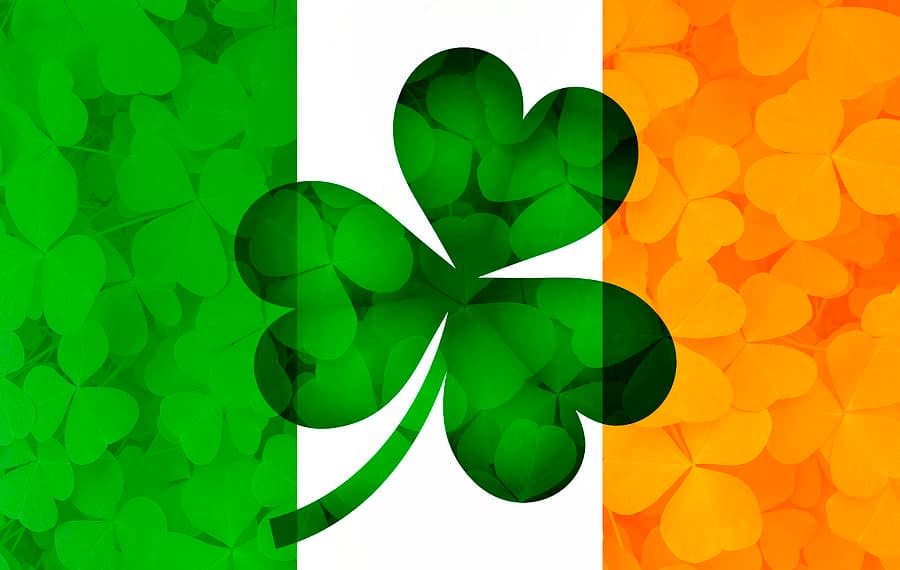 1.Ireland
1.IrelandIreland is a small country with a big presence. Its capital, Dublin, is a lively city known for its mix of history, culture, and modern energy. Walk through the streets and you’ll find Georgian buildings, contemporary architecture, and plenty of places to hear live music or have a chat over a coffee—or a pint. The country has changed a lot over the past few decades. Once more rural and conservative, modern Ireland is progressive and increasingly diverse. It's known for its strong economy, driven in part by tech and finance companies that have set up shop in Dublin. But away from the business districts, life moves at a slower pace, especially in smaller towns and the countryside. Culture runs deep. Ireland has long punched above its weight in literature, music, and the arts. Writers like James Joyce and W.B. Yeats are still celebrated, but contemporary authors, filmmakers, and musicians continue to make their mark. Traditional Irish music hasn’t faded—it just sits comfortably alongside modern genres, often blending with them in interesting ways. Dance, especially the kind popularized by Riverdance, remains part of the cultural fabric without feeling forced or overly nostalgic. Food in Ireland has shifted from its meat-and-potatoes reputation. While hearty stews and fresh-baked bread are still common, there’s been a focus on fresh, local ingredients and creative cooking. In coastal areas, you’ll find top-quality seafood, and farmers' markets are popular across the country. Sport plays a big part in daily life. Gaelic games like football and hurling are uniquely Irish and deeply connected to local pride, but people follow soccer, rugby, and golf with just as much enthusiasm. While Ireland’s landscape is famous—green fields, dramatic coastlines, and rugged hills—it’s not just postcard scenery. Many people live in suburban areas, and the country has seen growing urban development. Still, nature is never far away. Ireland’s recent history includes both economic highs and lows, as well as major social changes. The country has legalized same-sex marriage, eased restrictions on abortion, and shifted away from the strong influence of the Catholic Church. Yet, traditional values like community and hospitality haven’t disappeared—they’ve just adapted to a changing world. At its core, Ireland is a place that blends the old with the new. It’s a country where centuries-old traditions coexist with modern ideas, where the past is present but doesn’t overshadow the future.
- 2
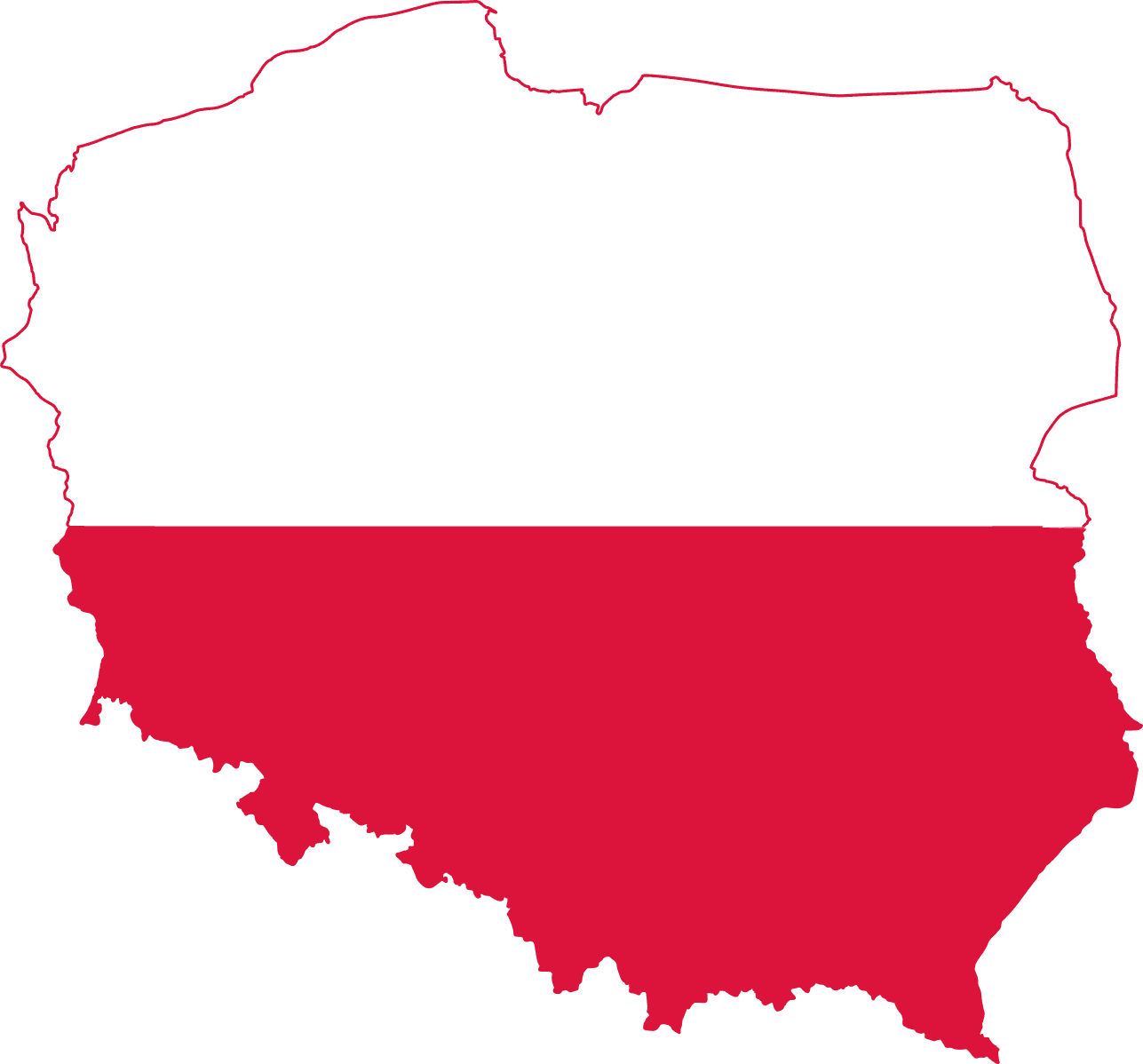 2.Poland
2.PolandPoland sits in Central Europe, stretching from the Baltic Sea in the north to mountains in the south. It shares borders with Germany to the west, Lithuania and Russia to the northeast, and several other countries along the east and south. Its landscape is a mix—flat plains in the center and north, and hilly or mountainous areas in the south. The coastline along the Baltic Sea is known for sandy beaches and coastal ridges. Inland, there are thousands of lakes, especially in the northeast, and big rivers like the Vistula and Oder cut across the land. The weather is temperate. Summers are warm, winters moderately cold. Rain tends to fall more during the summer months, and winters are becoming drier over time. Poland has deep roots in European history. It became a kingdom in 1025, later forming a powerful union with Lithuania. The Polish–Lithuanian Commonwealth was once one of Europe’s biggest states, with a unique political system. Poland's fortunes shifted in the late 18th century, when its neighbors carved it up, erasing it from maps for over a century. It re-emerged after World War I, only to be invaded at the start of World War II—a conflict that brought devastation and the horrors of the Holocaust. After the war, Poland fell under Soviet influence, but by 1989, it was the first Eastern Bloc country to shake off communism, thanks largely to the Solidarity movement. Today, Poland is a democratic country with a population of over 38 million. Warsaw, the capital, is the largest city. Others like Kraków, Gdańsk, and Wrocław are known for historic centers and vibrant culture. The economy is strong, with Poland being one of the larger economies in the European Union. Nature lovers come for places like the Tatra Mountains or the ancient Białowieża Forest, home to Europe’s largest land mammal—the European bison. There are 23 national parks, and over 17 sites are recognized as UNESCO World Heritage locations, from medieval town squares to the haunting Auschwitz-Birkenau memorial. Culturally, Poland has a rich tradition of music, literature, and art. Composer Frédéric Chopin and novelist Joseph Conrad both came from here. More recently, Poland’s fantasy literature, like Andrzej Sapkowski’s The Witcher series, has found global fame. Polish cuisine is hearty, with dishes like pierogi (dumplings), bigos (a cabbage and meat stew), and żurek (sour rye soup). Vodka has its roots here, but beer and wine are also popular. Sports are big in Poland—football (soccer) is a national passion, though volleyball and speedway racing attract large crowds too. The country also boasts top tennis players like Iga Świątek and mountaineers who’ve climbed the world’s highest peaks. Despite its complicated past, Poland today balances its historical heritage with modern growth. Old town squares sit beside new buildings, and traditions are kept alive alongside a fast-developing economy and infrastructure.
- 3
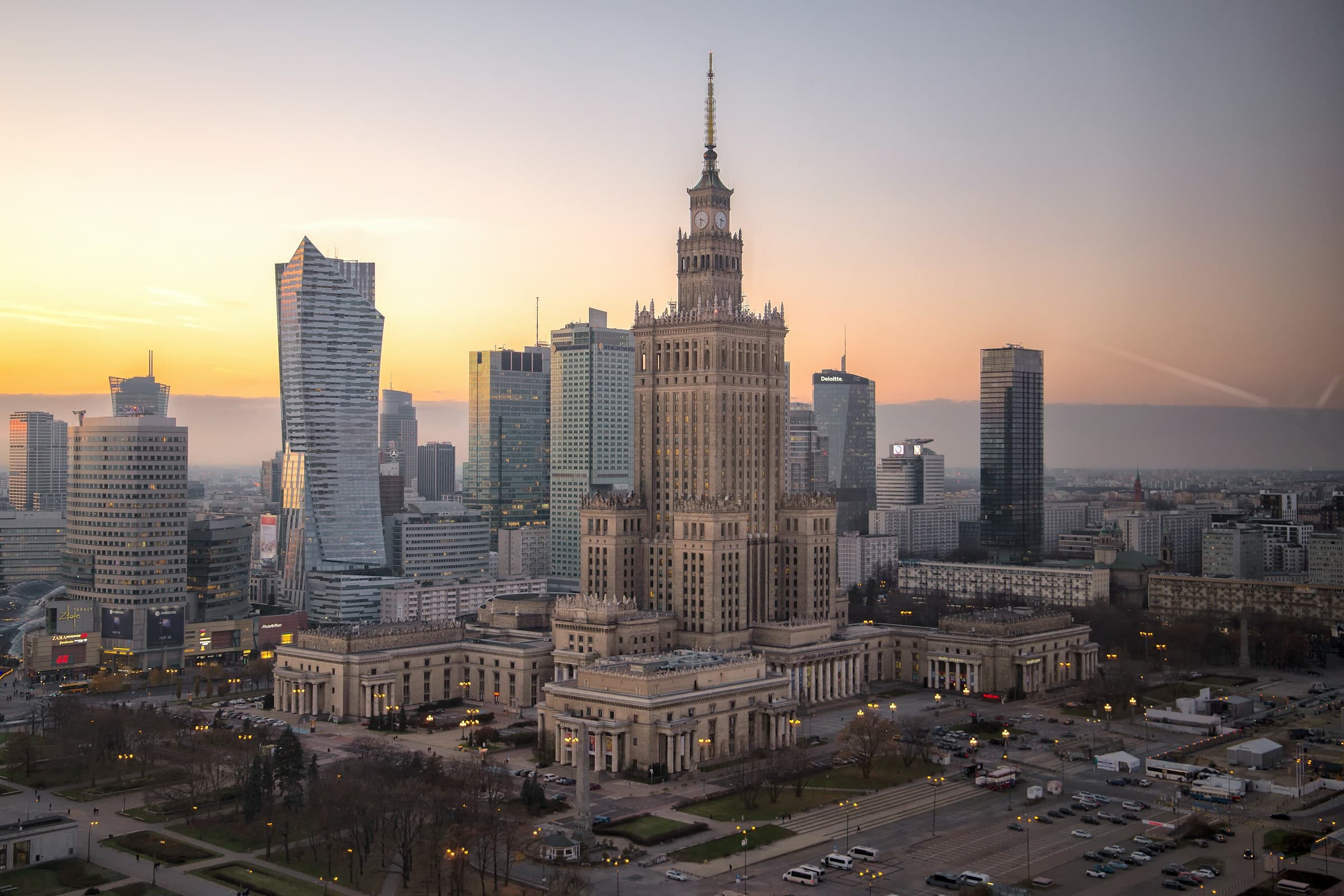 1.Warsaw, Poland
1.Warsaw, PolandWarsaw is the capital of Poland, sitting on the Vistula River in the east-central part of the country. With nearly 1.9 million people in the city and over 3 million in the wider metropolitan area, it’s Poland’s biggest city. It’s a place where old and new collide—modern skyscrapers stand next to rebuilt historic districts, and its skyline is a mix of glass towers and ornate churches. The Old Town, destroyed in World War II and painstakingly rebuilt, is now a UNESCO World Heritage Site. Walking through its cobblestone streets, you’ll find the Royal Castle and the colorful Market Square. Not far off is the Royal Route, a stretch of old palaces, churches, and the Presidential Palace, leading down to the grand Wilanów Palace and its gardens. Despite the scars of war—most of the city was flattened during WWII—Warsaw bounced back fast. The post-war communist era left a mark with grey apartment blocks and the towering Palace of Culture and Science, a gift from the Soviet Union that’s still one of the tallest buildings in Poland. Now, Warsaw’s business district is full of sleek glass skyscrapers, including the Varso Tower, the tallest in the EU. Green spaces are everywhere. Łazienki Park, home to peacocks and the Chopin monument, is a popular spot for Sunday strolls. The Vistula Riverbanks are packed with bars and cycling paths in summer. Even with its urban sprawl, about a quarter of the city is covered by parks and forests. Warsaw’s history is complicated. It was once a cultural melting pot, with a large Jewish community before the Holocaust. The city remembers that past with places like the POLIN Museum and the remnants of the Warsaw Ghetto. It also honors its wartime resistance, especially the 1944 Warsaw Uprising, with monuments and the powerful Uprising Museum. The city’s cultural life is rich. It hosts jazz festivals, classical concerts (especially anything Chopin-related), and has a buzzing nightlife. Food-wise, you’ll find everything from traditional Polish pierogi and hearty soups to modern vegan spots and Michelin-starred restaurants. There’s even a strong café culture, with old-school spots alongside trendy coffee bars. Weather in Warsaw is typical for Central Europe—cold, snowy winters and warm, sometimes stormy, summers. Spring and autumn can be mild and pleasant, though the weather can change quickly. In short, Warsaw is a city of contrasts. It’s got a tragic past but a vibrant present, blending historic charm with modern energy. Whether you’re wandering through its parks, exploring museums, or sipping coffee along the river, there’s plenty to take in.
- 2
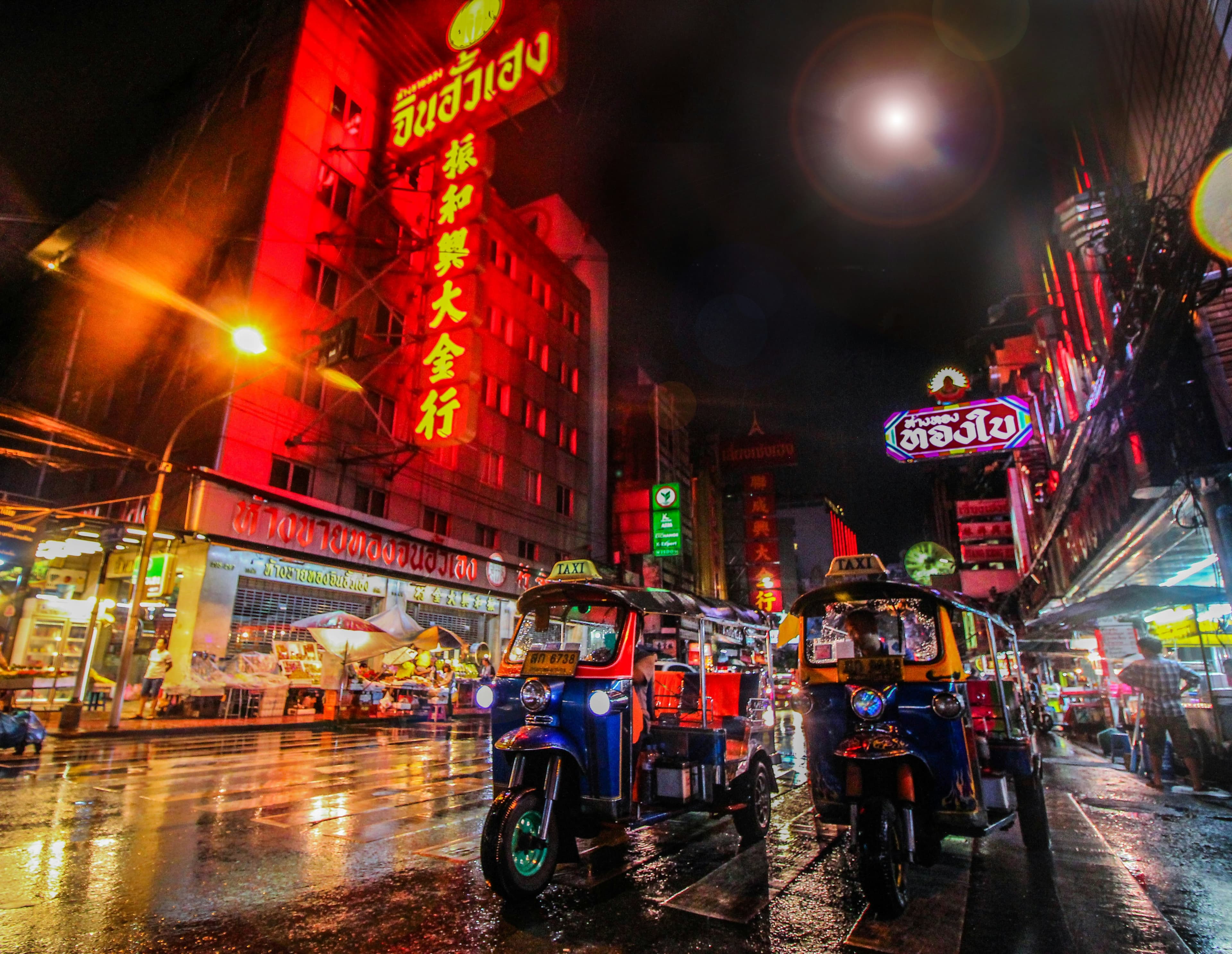 2.Bangkok, Thailand
2.Bangkok, ThailandBangkok is the capital of Thailand and its biggest city. It sits along the Chao Phraya River in central Thailand, spreading out over a large area with nearly 9 million people living in the city itself and over 17 million in the surrounding region. It’s a place that mixes old traditions with modern life. On one side, you’ve got ancient temples like Wat Pho and Wat Arun, and on the other, you’ve got massive shopping malls and skyscrapers. The city has been around for a long time, starting as a small trading post in the 15th century. It became the capital in 1782 when King Rama I moved it to the eastern bank of the river. Over the years, Bangkok has seen a lot—colonial pressures, modernization, political protests, and economic growth. It really took off in the 1980s and 1990s when foreign companies started setting up shop there. Bangkok is known for being busy and full of life. The streets are packed with cars, motorbikes, and tuk-tuks, which often leads to heavy traffic. Despite efforts to improve public transportation with skytrains and subways, traffic jams are still a common headache. The air can get polluted, but things have improved since the 1990s. Tourism plays a huge role in the city. People from around the world come to see places like the Grand Palace or enjoy the street food. Markets like Chatuchak and floating markets offer everything from clothes to local snacks. Khao San Road is popular with backpackers, full of budget hostels, bars, and street vendors. The city has a vibrant culture. Festivals like Songkran (Thai New Year) turn the streets into massive water fights, and during Loi Krathong, people float little boats with candles on the water. Bangkok also has a wild nightlife scene, ranging from lively bars to well-known red-light districts. There are two sides to Bangkok—modern malls, luxury hotels, and fine dining on one side, and narrow alleyways with street food stalls and local markets on the other. It’s a city that can feel overwhelming with the heat, traffic, and crowds, but it’s also full of energy, surprises, and contrasts.
- 0
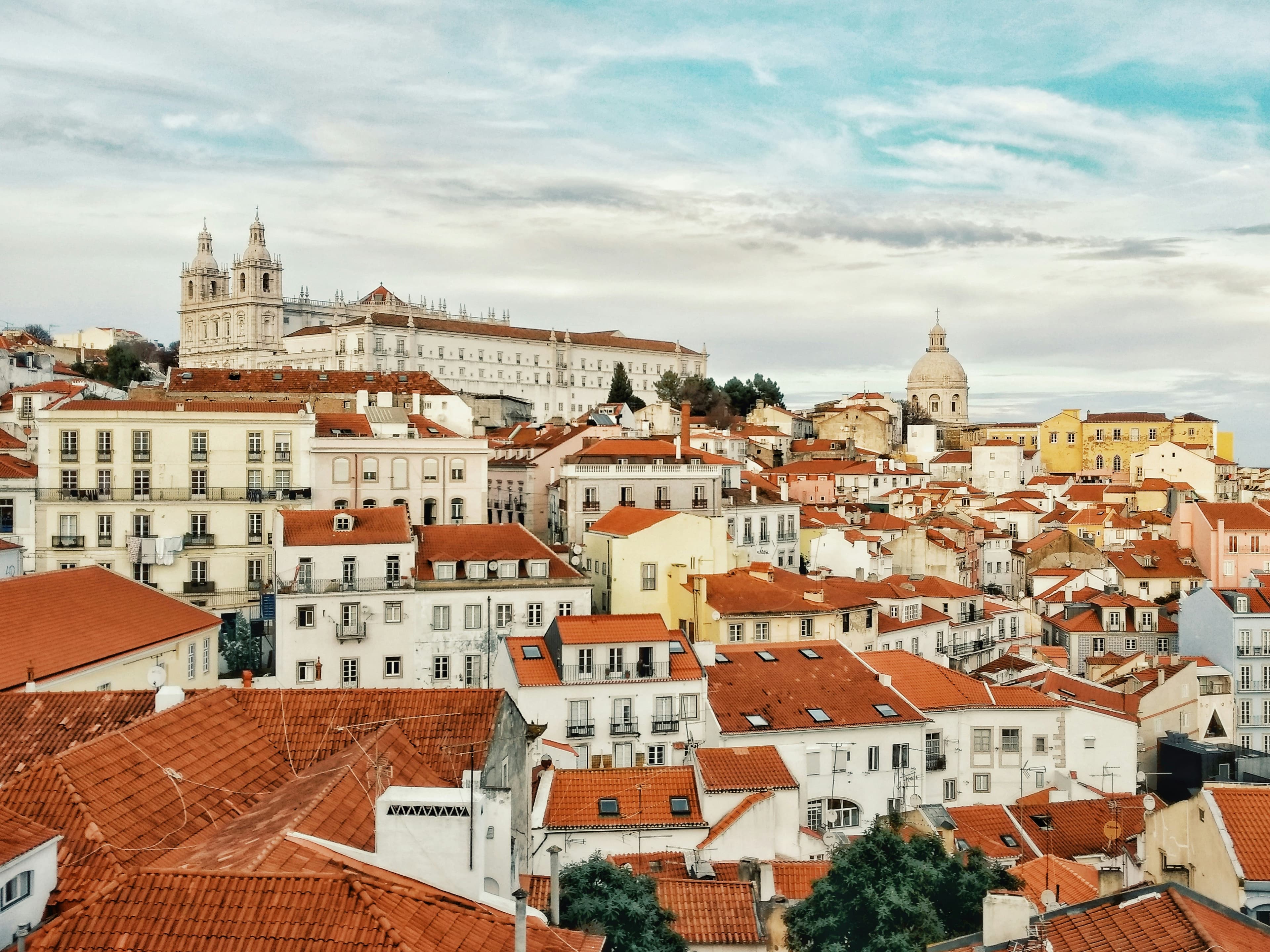 3.Lisbon, Portugal
3.Lisbon, PortugalLisbon sits on the western edge of Europe, right where the Tagus River meets the Atlantic Ocean. The city is built on a series of hills, which gives it sweeping views of red-tiled rooftops, cobbled streets, and the water beyond. Walking around, you’ll notice how the narrow lanes twist and turn, especially in neighborhoods like Alfama, where clotheslines stretch between buildings and the smell of grilled sardines lingers in the air. It’s a place where old and new blend together. You’ll find trams from the early 20th century rattling through streets, while modern glass buildings rise up in other parts of town. Down by the river, the Belém Tower and Jerónimos Monastery, both from the Age of Discovery, remind you that Portuguese explorers once set out from this very spot. Lisbon gets plenty of sunshine—nearly 3,000 hours a year. Summers are warm and dry, while winters stay cool and damp, but not too cold. Along the riverbanks, locals sit at cafés, sipping coffee or wine, while ferry boats glide across the water. Economically, Lisbon is Portugal’s hub, with banking, tech companies, and tourism bringing in most of the money. There’s a steady flow of visitors, drawn by the mild weather, historic sites, and laid-back vibe. Despite the city’s modernization, many residents struggle with rising living costs, especially with the influx of tourists and expats driving up housing prices. Culturally, the city is rich. Fado music echoes from small bars, and street art colors many walls. Markets buzz with fresh produce and seafood. People here celebrate Saint Anthony’s festival in June with street parties, music, and grilled sardines everywhere you look. Getting around is easy enough. There’s an extensive metro system, old-school trams, buses, and even ferries to cross the river. And if you fancy a bit of green space, parks like Eduardo VII Park or Monsanto Forest Park offer a break from the city streets. In short, Lisbon is a city that wears its history proudly but doesn’t mind embracing the modern world. It’s got a relaxed pace, friendly locals, and a charm that’s hard to shake.
- 3
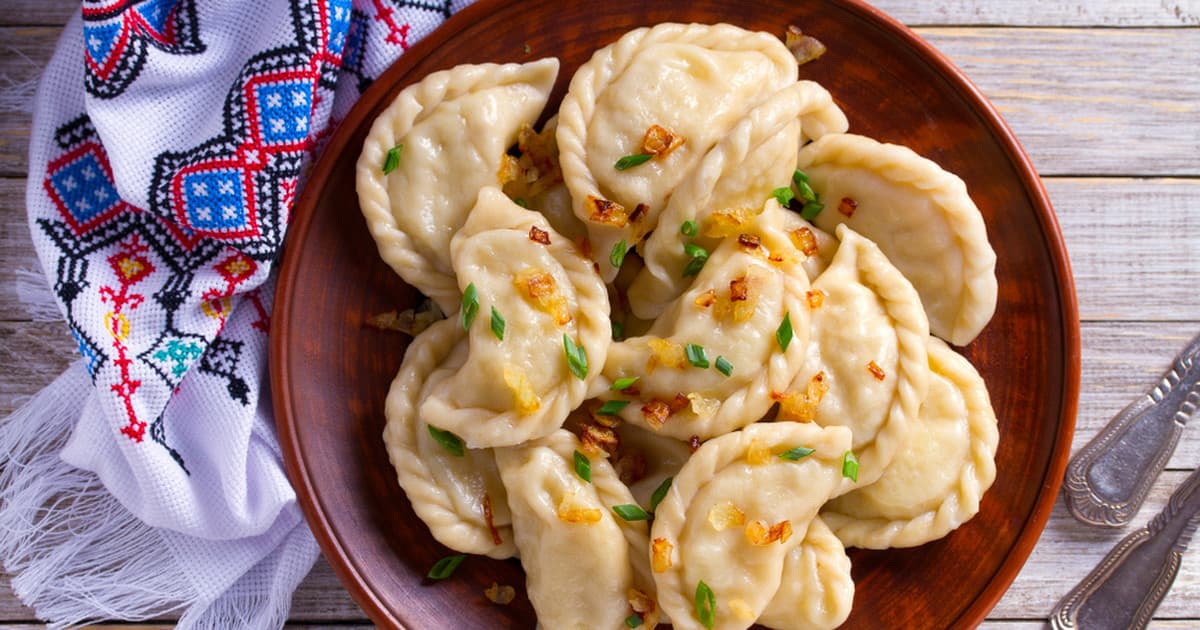 1.Polish Cuisine
1.Polish CuisinePolish cuisine is all about comfort, rich flavors, and tradition. It’s the kind of food that sticks to your ribs, perfect for long winters and big family gatherings. Think hearty soups, meat-heavy dishes, and a lot of potatoes, cabbage, and bread. Pierogi are probably the most famous Polish dish—soft dumplings filled with anything from potato and cheese to meat, mushrooms, or sweet fruits. Then there’s bigos, a slow-cooked hunter’s stew packed with sauerkraut, fresh cabbage, sausage, and sometimes even wild game. It’s the kind of dish that gets better the longer it sits. If you like schnitzel, you’ll love kotlet schabowy, a breaded pork cutlet usually served with mashed potatoes and pickled cucumber salad. And for something truly Polish, there’s żurek—a sour rye soup with sausage and egg, often served in a bread bowl. Poland is also big on fermented foods like ogórki kiszone (pickled cucumbers) and kapusta kiszona (sauerkraut), which add a tangy kick to meals. And if you have a sweet tooth, Polish desserts won’t disappoint—pączki (fluffy doughnuts filled with rose jam), sernik (a dense cheesecake), and makowiec (a poppy seed roll) are just the start. To wash it all down? Vodka, of course. Poland has been perfecting it for centuries. But if you prefer something milder, there’s always hot tea with lemon or kompot, a homemade fruit drink. Polish food is all about big portions, simple ingredients, and bold flavors. It’s the kind of cooking that makes you feel at home, no matter where you’re from.
- 1
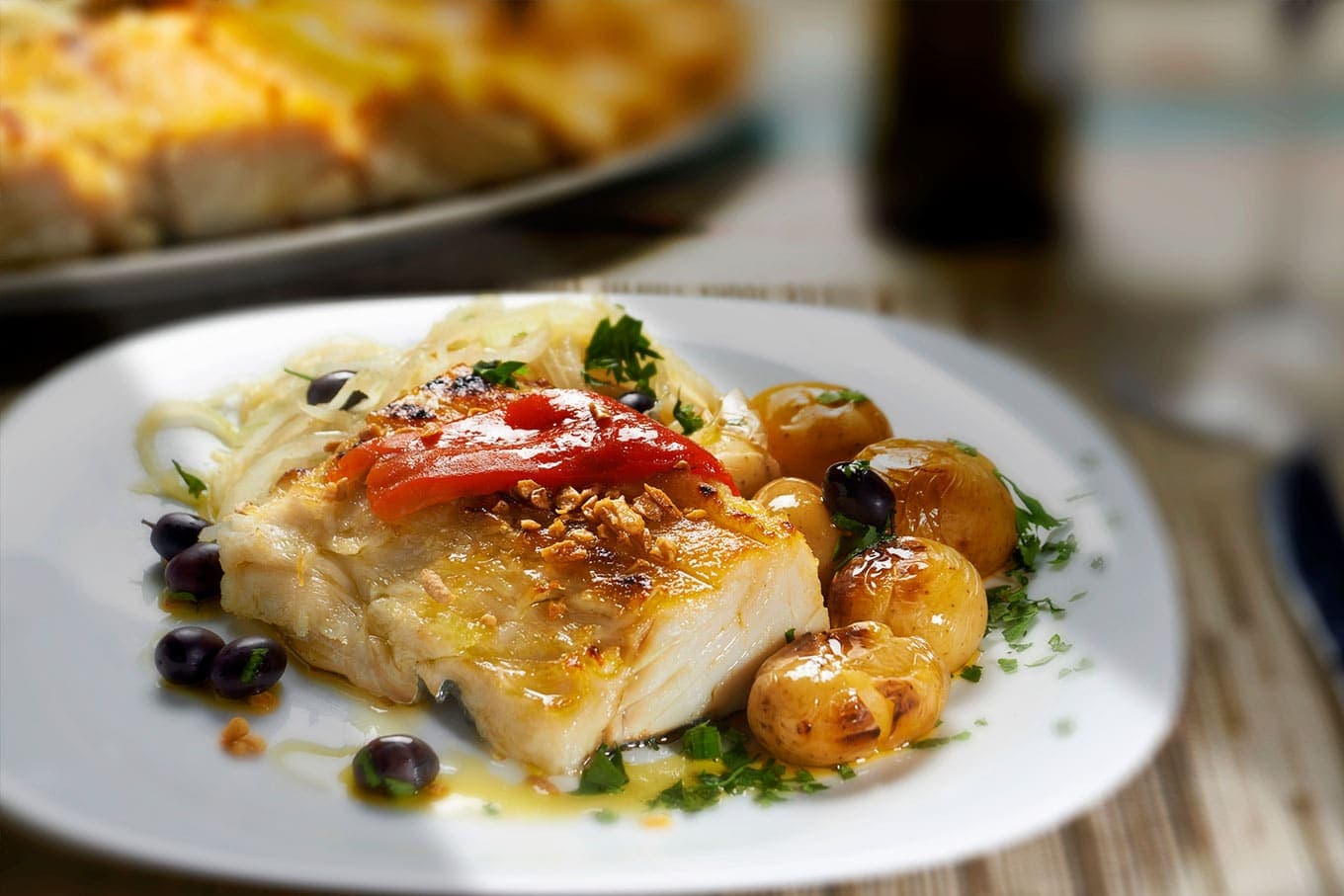 6.Portuguese Cuisine
6.Portuguese CuisinePortuguese cuisine stands as a prime contender for the title of the best food in the world, thanks to its rich culinary traditions, emphasis on fresh ingredients, and a harmonious blend of flavours that reflect its historical maritime prowess. Here's a compelling argument that underscores why Portuguese food deserves this accolade: Diversity Influenced by History and Geography Portuguese food is a palimpsest of the various cultures that have interacted with Portugal over centuries. From the Age of Discoveries when Portuguese explorers brought back spices from Africa and Asia, to the integration of New World crops such as tomatoes and potatoes, the cuisine reflects a synthesis of global flavours uniquely blended with traditional Iberian techniques. This historical melding of east and west, north and south, makes Portuguese cuisine not only diverse but uniquely rich and varied. Focus on High-Quality, Fresh Ingredients At the heart of Portuguese cuisine is the use of fresh, high-quality ingredients. The country's extensive coastline provides an abundance of fresh seafood, from sardines and bacalhau (dried and salted cod) to octopus and various shellfish, which are staples in the Portuguese diet. The emphasis on fresh, local produce and the traditional farming and fishing techniques enhance the natural flavours of the ingredients, allowing for dishes that are both simple and profoundly satisfying. Culinary Techniques that Enhance Flavour Portuguese cooking methods themselves are a testament to a culinary tradition that prioritises flavour. The use of 'cataplana' (a clam-shaped cooker) seals in the flavours and juices of the ingredients, while techniques such as grilling over charcoal infuse dishes with a smoky richness that is hard to replicate. The simplicity of seasoning, primarily using piri-piri (small fiery chillies), garlic, and olive oil, underscores the natural tastes of the ingredients rather than overpowering them.
- 2
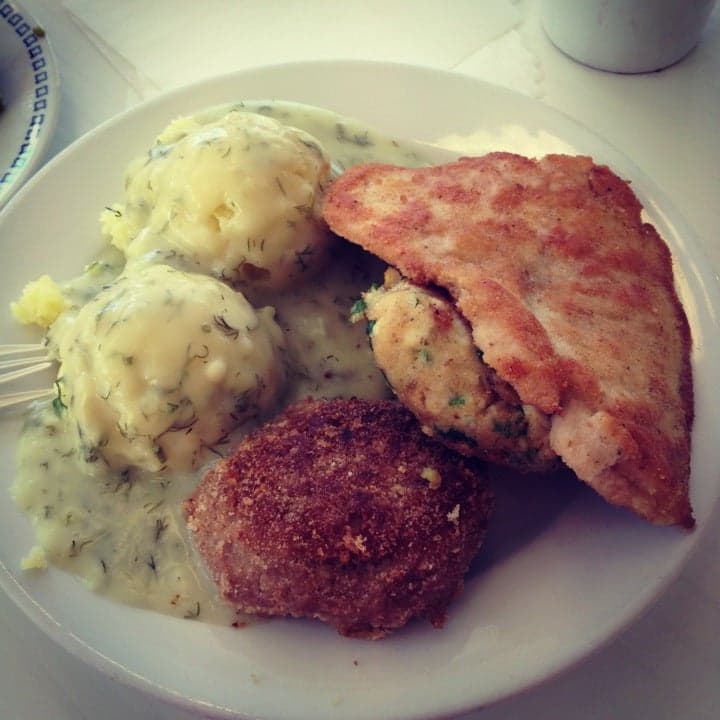 1.Bar Mleczny Słoneczny
1.Bar Mleczny SłonecznyAn authentic Polish milk bar. Cheap and delicious. Serves typical Polish foods. Probably the most affordable place in the center of Gdynia. Can get crowded at lunch time.
- 0
 2.Ogniem i Piecem
2.Ogniem i PiecemAffordable, casual pizza place in the center of Gdynia. They serve pizza by the slice, breakfasts, pastas and cakes. It's dog-friendly, has good music, friendly atmosphere and a vaguely "street style" hip vibe.
- 2
 1.U.S. Embassy Warsaw
1.U.S. Embassy WarsawThe U.S. Embassy in Warsaw is on Aleje Ujazdowskie, surrounded by other embassies and government buildings. It’s a large, modern building with tight security. The embassy handles visas, helps U.S. citizens, supports American businesses, and works on diplomatic relations with Poland. It also promotes cultural exchanges and coordinates military cooperation between the two countries. Most people go there for travel documents or official matters. It’s straightforward—focused on diplomacy, paperwork, and keeping U.S.-Poland ties strong.
- 1
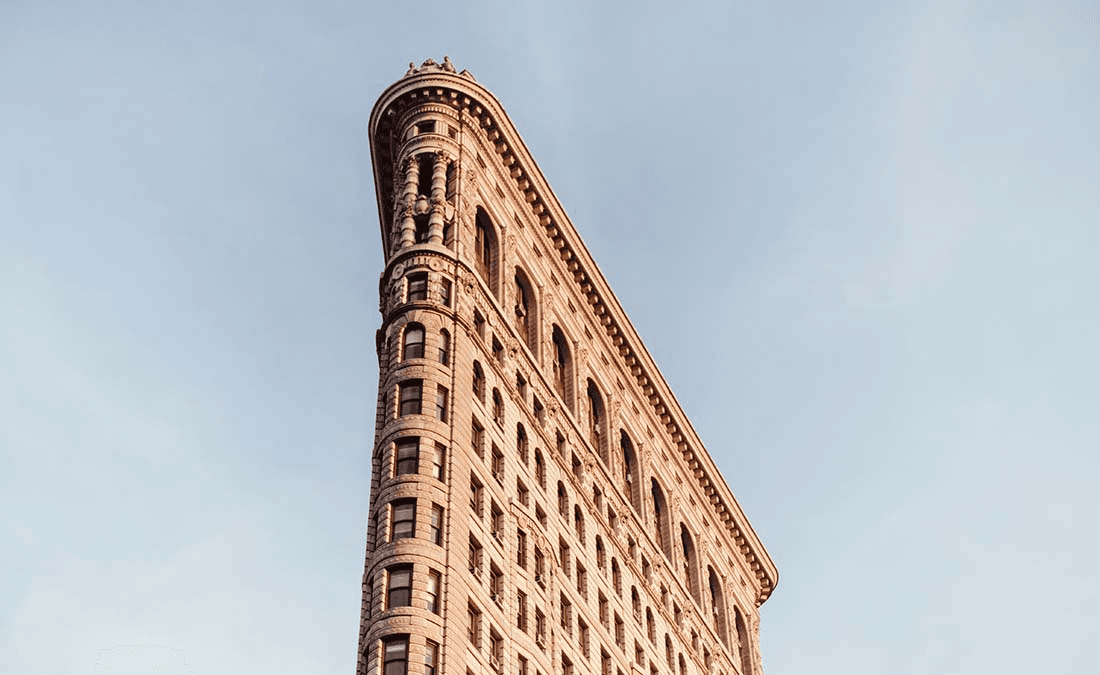 2.See the Flatiron Building
2.See the Flatiron BuildingA visit to New York City isn't complete without seeing the iconic Flatiron Building. Built in 1902, this 22-story, triangular skyscraper sits at the intersection of Fifth Avenue and Broadway. Known for its unique shape that resembles a cast-iron clothes iron, it's a favorite among tourists and photographers. The Flatiron anchors the vibrant Flatiron District and has been a National Historic Landmark since 1989. Its distinctive Renaissance Revival architecture makes it a standout in Manhattan's skyline. Perfect for a quick photo-op or a leisurely stroll around the neighborhood!
- 1
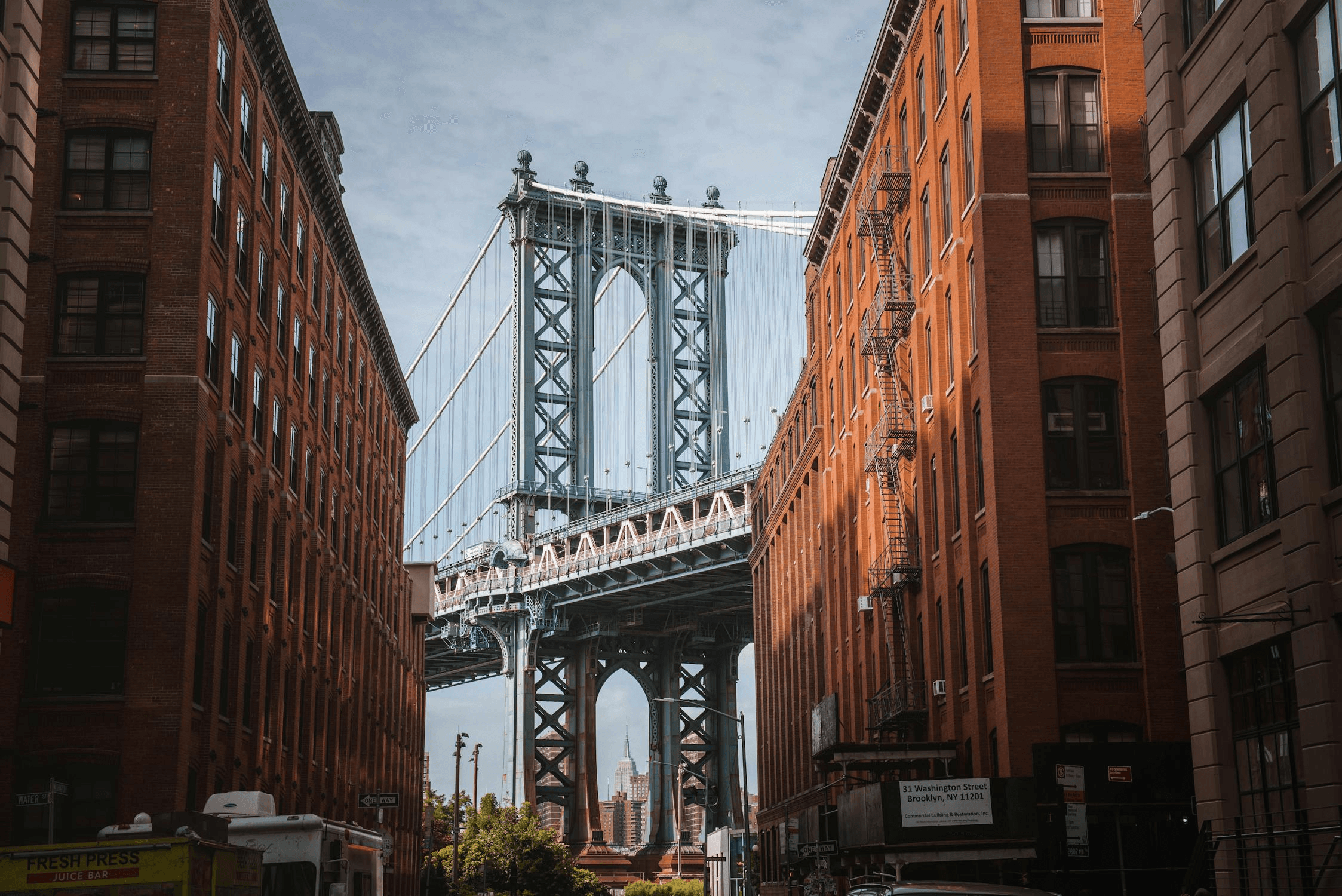 3.Walk around Brooklyn
3.Walk around BrooklynBrooklyn, a vibrant borough of New York City, is a melting pot of cultures and history. Known for its diverse neighborhoods, you can explore hipster havens like Williamsburg and Bushwick, stroll through the historic streets of Brooklyn Heights, or savor the multicultural vibes of Sunset Park. From the iconic Brooklyn Bridge and bustling Coney Island to the serene beauty of Prospect Park, Brooklyn offers something for everyone. Its thriving arts scene, with galleries, theaters, and live music venues, makes it a cultural hotspot. Plus, foodies will love the eclectic mix of cuisines available, from artisanal bakeries to authentic ethnic eateries.
- 1
 1.Sand Valley Golf Resort
1.Sand Valley Golf ResortSand Valley’s Championship Course extends over 80 hectares of picturesque Polish country side. Rated by Golf World as TOP 100 Course in Europe it is the Home for the Lotos Polish Open of 2013 and 2014 (a Pro Golf Tour event). The resort offers a 18 hole championship course (par 72), 6 hole par 3 course, roofed 20 bay driving range and a large practice putting green. Tilander-Ristola co-designed Inland Links layout offers wide rumbling fairways and challenging green sites that are the foundation for an exiting round of golf. Everything is tied together by the vast waste bunkers, clever routing and 18 memorable holes that all have their own story to tell.
- 1
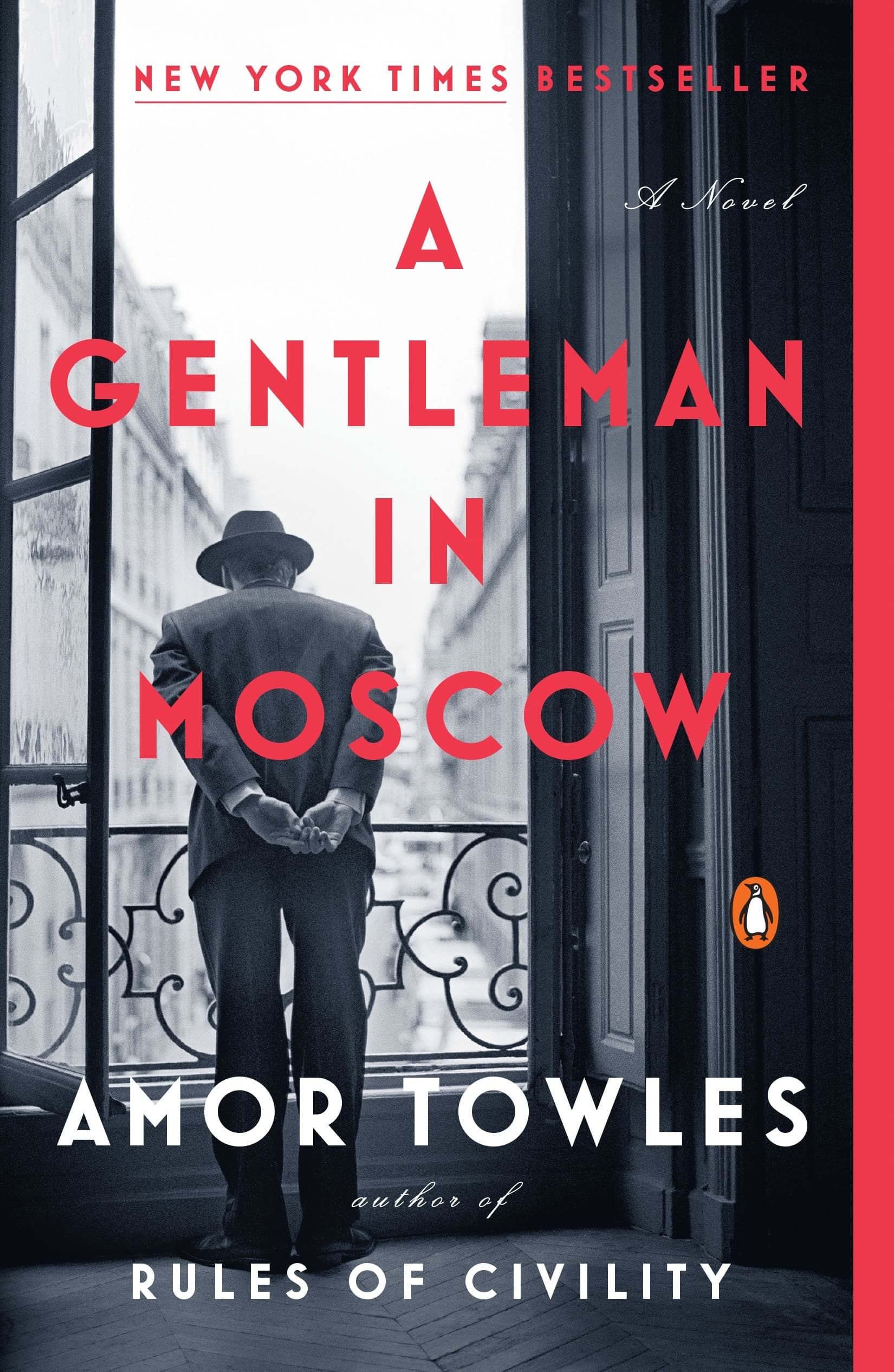 2.A Gentleman in Moscow by Amor Towles
2.A Gentleman in Moscow by Amor TowlesA Gentleman in Moscow is a historical fiction novel by Amor Towles. It follows Count Alexander Rostov, a Russian aristocrat who, after the Bolshevik Revolution, is sentenced to house arrest in the grand Hotel Metropol in Moscow. Instead of being imprisoned in a cell, he’s confined to the hotel, which becomes both his cage and his world. The story spans several decades, starting in the 1920s and running through key moments of Soviet history. Most of it unfolds inside the hotel, which is no ordinary place—it's a bustling, self-contained universe. Rostov, who begins the story living in a lavish suite, is forced to move into a tiny attic room. Despite this fall from grace, he navigates his new life with wit and charm, forming friendships with the hotel staff, guests, and unexpected visitors. The book isn’t just about the Count’s personal journey—it’s also about how time changes people and places, how history creeps in even when you’re standing still, and how small acts of kindness and loyalty can shape a lifetime. The setting, the Metropol, is richly described, from fine dining rooms to back corridors. There’s a good bit about food, music, and Russian culture, and plenty of philosophical musings, but it never gets too heavy. At its core, the novel is about making the best of what life throws at you. The Count is an old-world gentleman stuck in a new world that wants to forget people like him. How he handles that—sometimes with grace, sometimes with stubbornness—is what makes the book compelling. It's quietly dramatic, occasionally funny, and surprisingly heartwarming, all without needing big action scenes.
- 0
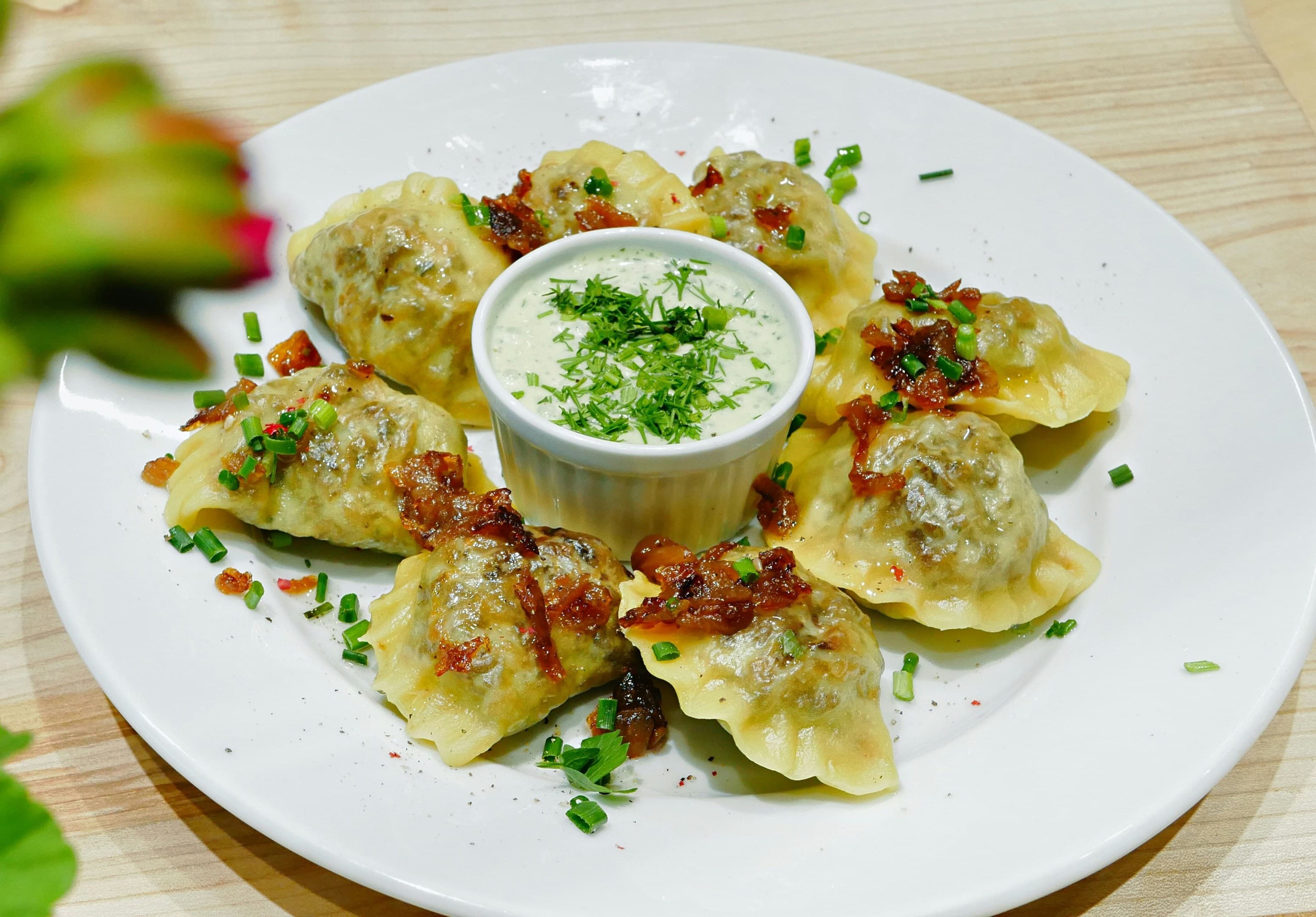 4.Pierogi Ruskie
4.Pierogi RuskieThe quintessential Polish dish. Made with white cheese, potatoes, salt, pepper, and onions. Topped with sour cream and bacon. Yum!
- 0
 5.Currywurst
5.CurrywurstCurrywurst is a German street food made of a pork sausage, usually a bratwurst, that's grilled or fried, then sliced into bite-sized pieces. It's topped with a curry-flavored ketchup sauce—basically a mix of ketchup, curry powder, and sometimes extra spices like paprika. It’s often served with fries or a bread roll to mop up the sauce. It was first made in Berlin in 1949 by a woman named Herta Heuwer, who got ketchup and curry powder from British soldiers after World War II. She mixed them up, poured it over some sausage, and started selling it at a street stand. It caught on fast, especially with construction workers rebuilding the city. Today, you can find currywurst all over Germany, but Berlin is still its unofficial home. There used to be a whole museum dedicated to it, which shows how much people love the stuff. You usually get it on a paper plate with a tiny wooden fork, and everyone has their preference—some like more curry powder on top, others a spicier sauce. Volkswagen even makes its own currywurst for employees, which is a bit wild when you think about a car company also being a sausage producer. All in all, it’s simple, messy, and filling—the kind of food you grab when you’re hungry and don’t want to overthink it.
- 1
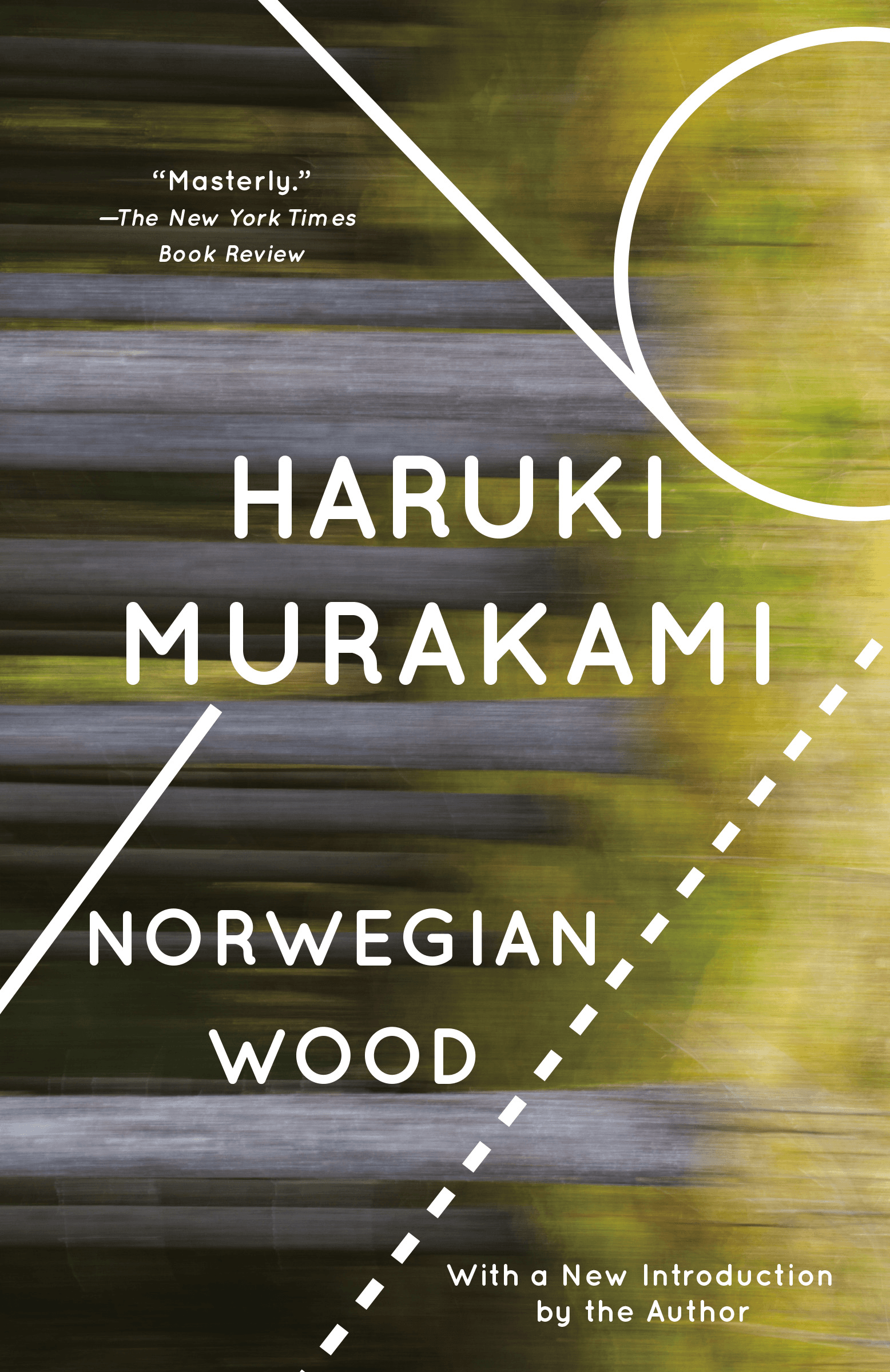 2.Norwegian Wood
2.Norwegian WoodToru, a serious young college student in Tokyo, is devoted to Naoko, a beautiful and introspective young woman, but their mutual passion is marked by the tragic death of their best friend years before. As Naoko retreats further into her own world, Toru finds himself drawn to a fiercely independent and sexually liberated young woman. Stunning and elegiac, Norwegian Wood first propelled Haruki Murakami into the forefront of the literary scene.
- 0
 28.From Setup to Success: Navigating MyBoard.co for Content Creators
28.From Setup to Success: Navigating MyBoard.co for Content CreatorsThis engaging video tutorial walks through the features and benefits of MyBoard as a tool for digital marketers looking to enhance their online presence. It covers detailed steps from account setup to content publication, emphasizing the shift from passive consumption to active creation in the digital space. The creator points out both the advantages and the current limitations of MyBoard, such as the inability to add images directly and issues with back navigation. By highlighting these details, the video helps viewers maximize their use of MyBoard while planning for potential hurdles, making it a comprehensive guide for emerging digital marketers and content creators. How MyBoard.co Can Transform Passive Scrolling into Productive Engagement: https://www.youtube.com/watch?v=XpDpw4AhHkU
- 1
 2.Go Big Reviews
2.Go Big ReviewsAt Go Big Reviews, we help businesses across various industries gather more 5-star reviews with our powerful online platform. Our web app allows clients to easily request and collect reviews from their customers, all while maintaining a white-labeled experience that showcases their unique branding. Industries such as dentistry, veterinary care, HVAC, real estate, home inspection, plumbing, nail salons, and restaurants rely on Go Big Reviews to enhance their online reputation. Our intuitive review management dashboard enables businesses to respond to feedback efficiently, while AI-powered responses streamline the process. Plus, custom QR codes make it easy for any business to gather reviews, even without customer data. Elevate your online presence with Go Big Reviews!

